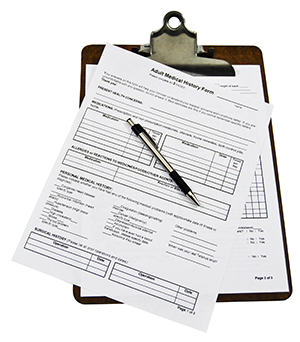The financial success of your practice starts with your front office.
Front Office
1. Failure to check eligibility automatically PRIOR to patient visit, which leads to denied claims.
2. Failure to get procedures authorized which leads to denied claims.
3. Failure to get proper referral documentation which leads to denied claims.
4. Not discussing patient financial obligation PRIOR to the visit which leads to increased amount of patient aging.
5. Failure to verify patient information is current and accurate on every visit which could lead to claim rejections.
6. Failure to collect patient balances at time of visit, which leads to increased patient aging.
7. Failure to confirm patient appointments, which could lead to increased amount of NO SHOWS.
8. Poor "customer service" (patients ARE customers) - which could lead to a loss of patients and bad PR. It takes more money to attract a new patient then retain one.

Claims Management
Accurate and timely claims management is essential to your private practice’s profitability. If your practice is still relying on paper lists and books of billing codes, you’re setting yourself up for a influx of claims denials. An electronic health record (EHR) system that doesn’t provide automatic claims scrubbing is a major source of revenue leaks when claims are denied or rejected. The inefficiency of losing track of pending claims is another leak. Failure to properly manage rejected claims is expensive!
Other claims management challenges:
1. Inaccurate coding - since codes are constantly changing
2. Under-coding
3. Over- coding
4. Inaccurate patient information
5. Staff chaos and causing delay of claim submission and human errors
6. Failure to track rejections and denials
7. Excessive write offs- are they contractual or uncollectible?

Successful Strategies for Common Denials
- Claim was included in the allowable of another service � In other words, the service was bundled. It is essential to know and understand global periods and National Correct Coding Initiative (NCCI) edits when working bundling denials. These types of denials should be handed over to the coders of the practice to answer these questions: Was the service bundled with another procedure billed during the same operative session? Or, was it bundled in a previous surgery that was performed 89 days prior? Were necessary modifiers omitted? Find the answer and resubmit the �corrected� claim to the payer.
- Not medically necessary � The physician orders tests necessary to diagnose the patient�s condition, but the claim is denied with an error code CO50. The payer is saying that the tests were not medically necessary. This type of denial usually occurs because there was a failure to include all the necessary diagnoses on the claim. Before this charge is adjusted, research the documentation to see if a documented diagnosis was omitted from the claim.
- Service not covered � Some services simply aren�t covered, such as voluntary cosmetic procedures and most weight loss plans. If we bill these services to an insurance company and receive a denial that the service is not covered, don�t adjust them off. These services must be billed to the patient.
When Medicare denies a service, you will receive an explanation of benefits (EOB) with American National Standards Institute (ANSI) code PR-49. �PR� means patient responsible. In other words, Medicare is telling you to bill the patient. Do not write these off. When you adjust them, the services that were provided are basically given �free of charge� to the patient. - No prior authorization � When you see this, your No. 1 resource is the local hospital business office where the test/procedure was performed. They may have obtained a prior authorization number. The claim can be re-filed with this number in the appropriate field on the CMS 1500 form.
Some payers approve retro-authorizations. Always call and ask. There may be extenuating circumstances that, when fully explained to the payer, may result in the claim being paid. For example, a patient may be visiting friends 90 miles away from home when he becomes ill and isn�t able to drive back home to see his network provider. Payers will make exceptions, but they need to see the whole picture. -
Timely filing � Know the timely filing periods of your most common payers. The filing period could be as short as 90 days or up to 365 days. Timely filing denials are commonly seen when corrected claims are filed. For example, a denial is received and it is placed in a �Denials to Work� pile. A month later, this denial is looked at, and research shows that a code needs correction. The account is updated and the claim is resubmitted; however, the claim submission date is now 95 days from the actual date of service. A payer with a 90-day timely filing period will deny this claim for timely filing. When filing a corrected claim, always include the payer�s previous claim number that was issued on the denial. This previously issued claim number tells the payer immediately that this corrected claim was initially filed on time.
The month of January can wreak havoc on timely filing denials. As happens with all creatures of habit, remembering to change the date from one year to the next sometimes takes us awhile. This not only happens with our checkbook, but also for billers who forget to enter the new year when keying charges. For example, January 2011 charges may be entered as January 2010. Consequently, the payer receives the initial claim submission as being one year old and the claim is denied as untimely. Appropriate research should uncover this sort of problem.Very rarely should there ever be a denial for lack of timely filing, though, because most provider offices file claims electronically. Electronic clearinghouses provide daily reports called �Claims Acknowledgements.� These reports list each and every claim that comes through their portal. Store these reports chronologically and where they are easily accessible. Use these reports to provide proof to payers that a claim was submitted to them in a timely fashion.
- Duplicate � Denials for duplicate claims are seen quite often. The denial could be a result of an actual duplicate�a charge entered twice�but it could be something such as a bilateral procedure billed on two lines where the payer incorrectly processed the second line as a duplicate.
Or, was it a date of service issue? Sometimes subsequent hospital visits are keyed using the same date instead of consecutive dates. Always check to see if a keying error caused the denial. -
When All Else Fails, Pick Up the Phone
If after researching a patient�s account you do not find any evidence that payment was received or the deductible was applied, call the payer. Find out when the payment was issued. Did it clear the bank? Who was the check made out to, and where did they send the check? It could very well be a processing error by the payer that one phone call from the provider�s office can clear up.Typically, these types of denials are communication issues. By communicating the right information to the payer, claim denials can be overturned. If you find during your research that nothing further can be done, and that you must adjust the service, turn it into a learning experience. Everyone involved should be made aware�the physician, nurse, and the coder or biller�so this never happens again. Remember, taking an adjustment should always be the last resort.


